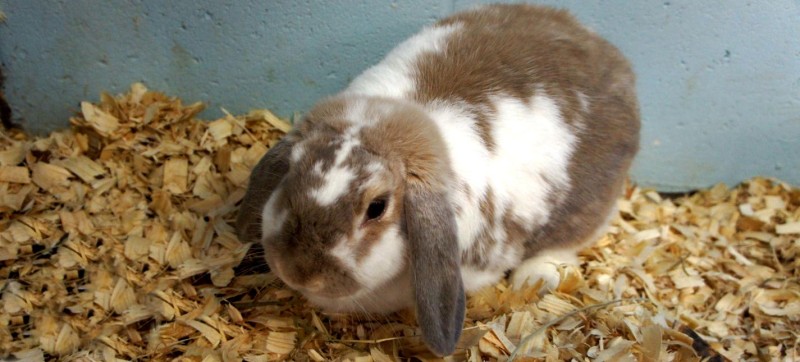Domestic Rabbit - Oryctolagus cuniculus domestic

Range:
When kept as a pet they can live anywhere as long as they are provided food and shelter. Worldwide except Australia, New Zealand, and Antarctica.
Activity Cycle:
diurnal
Features:
Have eyes located on the side of their head, allowing them to see a wider area, but they don’t have depth perception. They use their hearing and sense of smell to spot predators. They have large ears that aid in cooling off the rabbit in hot weather.
Size:
They vary in size from 2-20 pounds.
Social Structure:
Live in large groups
Life Expectancy:
5 years and longer in captivity
Diet:
Grasses, clover, bark, and grains
Reproduction:
Males do not help raise young. Moms do not sit with babies, just like in the wild. They will watch from a safe distance and only nurse 1-2 times a day when they feel safe. A female rabbit can have a litter of 1-10 offspring.
Interesting Facts:
- The domestic rabbit’s niche is to provide food for many large animals. Without them a lot of larger animals would be without food and die.
- Rabbits are an animal that sometimes ingest their feces for a second time to get the most nourishment from their food.
- Have 6 teeth-2 upper and 2 lower and 2 smaller pulp teeth behind the upper incisors.
- Breeds of domestic rabbits have developed since the 18th century.
- Practice pseudorumination-which refers to production of 2 kinds of fecal matter. One is hard and one is soft. The soft matter is consumed. Allows them to further digest the nutrients.
Video:
Prices
- Adult (13 and over)$12.50
- Child (2 - 12)$9.00
- Child (1 and Under)FREE
- Senior (65+)$11.50
- Active Military$11.50
We begin transferring animals to evening (off exhibit) holding at 4:30 each night.
Find Us
2320 N. Prospect Rd.
Peoria, IL 61603
Phone: 309-686-3365
Open Daily 10:00-5:00
Last admission at 4:30
